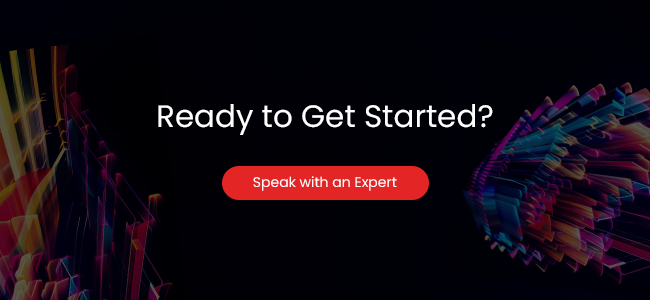Recommended Blogs

Don’t Let Bad Data Travel: Smarter Approaches to Cloud Data Quality
Table of Content
- The Data Quality Issues That Follow You to the Cloud
- What “Good Data Quality” Actually Looks Like in a Cloud World
- A Smarter 3-Phase Data Quality Testing Model: Before, During and After Migration
- Who Owns Data Quality in the Cloud
- Why TestingXperts is the Partner Behind Clean, Trusted, Migration-Ready Data
- Conclusion
What if the biggest risk to your cloud migration isn’t your strategy, but your data itself? As enterprises move cloud-first models, many assume the move will automatically fix legacy data quality issues. The truth is tougher. If your data is incomplete, inconsistent, or poorly validated, those flaws will migrate with it; only faster and at scale. Cloud infrastructure spending 2025 is forecast to jump 33.3% yearly to $271.5 billion. More capacity means faster propagation of defects if you don’t gate data with tests.
Data quality testing is important because it ensures data accuracy, reliability, and trustworthiness for decision making and analytics.
Here’s the reality: clean data isn’t a bonus; it’s the foundation of every reliable insight, automation and decision you’ll make post-migration. Effective data governance ensures data quality and integrity during cloud migration. Good data management practices are necessary to support high quality data in the cloud. Data pipelines are critical for moving and transforming data, and their reliability depends on data quality testing.
Reliable data is necessary to support business operations and analytics after migration. But too many teams wait until it’s too late to do structured data quality testing. It’s time to take ownership, not chances. This guide will show you how to make sure your data doesn’t just move to the cloud; it evolves with it.
The Data Quality Issues That Follow You to the Cloud
Migration is like a high-speed convoy. If a truck leaks before departure, the leak won’t stop at the border. These are common data quality challenges that organizations face during migration, and if not addressed, they will result in poor data quality. Poor data quality will result in operational and analytical problems after migration, such as incorrect insights, compliance issues, and reduced customer trust.
Fixing these issues is critical to maintaining the organization’s data quality. Proactive measures to identify and fix these challenges will improve data quality and reduce the risk of amplified problems in cloud environments.
Duplicates and Orphaned Facts
Parallel loaders and retry logic can cause double inserts and orphaned facts when the primary key is faulty, resulting in duplicate records and disconnected data. Testing primary keys is important to ensure referential integrity and data consistency as primary keys are the main identifier connecting parent and child tables.
Missing foreign keys creates facts without dimensions. Metrics inflate or disappear depending on the join type. Enforce idempotent upserts and orphan checks before promotion.
Schema Drift and Silent Type Coercion
Auto inference changes decimals to strings, trims precision or adds nullable columns that break assumptions, impacting the underlying data model and its accuracy. Validate data models during schema changes to ensure data quality and data integrity.
Lock schemas with contracts, version changes, and block-breaking edits.
Timezone and Event-time Confusion
Mixing local timestamps with UTC yields negative durations and misaligned SLAs. Normalize ingestion, store timezone explicitly and validate event time vs processing time.
Stale Or Conflicting Reference Data
Old product or region codes misclassify records during phased cutovers, mostly when there are inconsistencies between multiple data sources. Treat lookups as versioned data products and test value domains on load.
Late Or Out-of-Order Arrivals
Late or out-of-order arrivals are common in data pipelines. Monitoring and testing data pipelines is important to prevent these issues and ensure data quality throughout the ETL/ELT process.
CDC and streaming micro-batches land out of sequence. To avoid overwriting the truth, use watermarks, windowed dedupe, and deterministic merge keys.
Lineage, Masking and Permission Drift
Rebuilt pipelines drop column-level lineage and carry over weak access rules, issues that can be exacerbated in a distributed data ecosystem. Preserve end-to-end lineage, enforce least-privilege IAM and ensure masking policies travel with the data.
What “Good Data Quality” Actually Looks Like in a Cloud World
Good doesn’t mean perfection. It means measurable, enforced, and automated at the same speed as your cloud pipelines. Measuring data quality involves tracking key metrics such as accuracy, completeness, consistency, timeliness, and validity to see if the data meets business standards. Organizations must measure data quality to ensure their data consistently meets those standards and supports business objectives.
Data quality testing is a structured approach to validating and improving data, often guided by clearly defined validation rules that enable automation and accuracy. Automated data quality checks are critical in continuous monitoring, error detection, and validation across systems and datasets.
Ongoing data quality efforts are necessary to maintain high standards, transparency, and trust in your data. Data quality and integrity throughout the data lifecycle is essential for reliable, trustworthy and actionable information.
Here is what that looks like in concrete terms.
Data Contracts in Code
Define schemas, keys, nullability, value domains and PII tags as machine-readable contracts stored beside pipeline code. Data contracts also ensure the quality and transparency of data transformation code by enforcing standards during development and review. Pull requests that break the contract fail CI. Producers publish versioned changes. Consumers impact tests before the merger. Contracts eliminate tribal knowledge and make quality enforceable at build time.
Freshness and Completeness SLOs
Declare dataset SLOs which are often determined by the characteristics and update frequency of the data source, such as “arrives by 02:00 UTC” and “≥99.5 percent of expected rows”. Pipelines emit watermarks, counts, and variance against rolling baselines. A run is green only if SLOs pass. These guarantees align business expectations with technical reality and prevent stale or partial data from promotion.
Deterministic Upserts and Dedupe
Implement of idempotent writings using merge keys and event time windows. Uniqueness tests normalize raw data by identifying and removing duplicates before loading into production, ensuring data quality, and preventing downstream issues. Reprocessing a day yields identical results.
CDC collisions collapse predictably. Soft deletes remain tomb stoned. This approach eliminates ghost records and duplicate facts that otherwise inflate metrics, corrupt cohorts and make debugging painful after a cutover or retry storm.
Referential Integrity and Lineage
Load dimensions before facts. Enforce orphan checks with thresholds that block promotion when exceeded. Referential integrity is maintained through automated data tests that check for orphaned records and broken relationships. Maintain column-level lineage from sources to KPIs so you can answer “what feeds this metric” instantly. Strong lineage accelerates incident triage, supports audits and prevents accidental breaks when teams refactor jobs for the cloud.
Standardized Types, Units and Reconciliation
Normalization starts with raw data to ensure consistency before further transformation. Normalize currency, units, and timestamps at ingestion. Store units explicitly and validate distributions against golden sources. After loading, reconcile key aggregates with billing, ERP or payment processors and alert them to drift beyond allowed deltas. This prevents silent precision loss and keeps financial and product KPIs trustworthy across environments.
Observability, Ownership and Privacy by Design
Measure freshness, volume, schema, distribution, uniqueness, null ratios, and referential integrity. Data observability tools provide automated monitoring and alerting for data health and quality, helping organizations ensure data reliability by detecting anomalies and issues in real time.
These tools monitor data integrity and maintain trust in data across workflows. Data teams are responsible for using observability tools to uphold data quality standards and proactively address issues. Route alerts to accountable dataset owners with runbooks. Classify PII and enforce masking in non-production by default. At least privilege access and audit trails travel with the data, so quality, security and compliance move together.
A Smarter 3-Phase Data Quality Testing Model: Before, During and After Migration
Move fast, but never blind: install hard gates that stop defects at the source, mid-pipeline and at the finish line, so your migration carries only trusted data. Data quality testing tools and automated data quality tests are essential for implementing the 3-phase model, as they ensure data accuracy, completeness, and reliability throughout the migration process.
Use test data to validate each phase of migration to prevent errors and ensure the integrity of your data. Organizations can test data quality by applying validation rules, monitoring data pipelines, and defining quality metrics which help identify and resolve issues before, during and after migration.
The benefits of testing data quality are improved decision making, reduced risk of data errors, and increased confidence in migrated datasets. You get clear ownership, repeatable tests and binary pass or fail criteria tied to absolute business truth. “Lift and shift first, fix later” only spreads defects across new platforms and teams. Act now by adopting the three phases and promoting only what passes every gate.
Phase 1: Before Migration: Establish Truth and Contracts
Inventory and Rank critical datasets by revenue risk, regulatory exposure, and downstream usage. Inventory all relevant data sources before migration and mark PII fields and data residency constraints.
Profile sources for null ratios, distinct counts, outliers, duplicates, orphaned facts, and unit mismatches. Apply data quality tests to each data source to establish baselines. Save these as baselines.
Publish data contracts per dataset with columns, types, nullability, keys, value domains, and masking rules. Document data transformations for transparency and reproducibility and store contracts in the repo.
Define SLOs per table or stream: arrival time, completeness percent and tolerated variance vs 7-day moving average.
Reconcile against gold systems like billing or ERP. Record accepted deltas per metric to become go-live thresholds.
Exit criteria: no critical severity data quality issues open, contracts approved, synthetic edge case data ready and a canary domain selected.
Phase 2: During Migration: Gate Every Load
Canary First: migrate to one domain or a small date range. The canary process helps validate the data pipeline before full migration. Block full loads until the canary is green for three consecutive runs.
Enforce Contracts in CI and Runtime: schema checks, domain checks, uniqueness, referential integrity and PII masking in non-prod. Validation rules are enforced at each stage to ensure data quality.
Predictable Updates: merge stable keys plus event time. Add a dedupe window and watermark logic for late or out-of-order events.
Calculator Tests: verify unit conversions, rounding and currency treatments with known fixtures. Fail fast on any precision loss.
Sample-Level Reconciliation: row hashing between source and target on a daily slice and aggregate totals compared to baselines.
Promotion Gate: promote to curated only if SLOs pass, orphan rate is under threshold, duplicate ratio is within window and lineage is complete. Any changes a business user makes during migration should be carefully tested to prevent errors.
Phase 3: After Migration: Prove and Operate
Full Reconciliation: compare revenue, refunds, active users and inventory positions with gold systems for the last 30, 60 and 90 days. Full reconciliation is performed in the data warehouse to ensure data accuracy.
Drift Detection: alert distribution shifts, null patterns, cardinality and dimensional coverage vs rolling baselines.
Quality Scorecards: publish per-dataset scores for freshness, completeness, uniqueness, referential integrity and privacy conformance.
On-Call and Runbooks: route alerts to named owners with playbooks for rollbacks, replays and backfills. Measure means time to detect and repair. Business users validate that migrated data meets their needs.
Access and Privacy Audits: verify least-privilege IAM, column-level masking and tokenization in non-prod. Remediate any scope creep.
Stabilization Review: after two stable cycles, remove temporary bridges, finalize deprecations and lock change control for high-risk tables.
Who Owns Data Quality in the Cloud
In the cloud, data quality is not a department; it’s a shared discipline. The old “IT owns the data” model breaks down when pipelines, storage and analytics are distributed across multiple teams and services. Clear ownership ensures accountability scales with the platform. The data team works across functions to ensure data quality, transparency, and reliability throughout the data lifecycle.
Data Engineers are the first line of defense. They enforce contracts, validate schema changes, and automate tests in CI/CD pipelines. Every transformation they deploy should include freshness, completeness and referential integrity checks as part of its definition of done.
Data Stewards and Governance Teams are the custodians of meaning. They manage business glossaries, reference data and data lineage to keep the context intact. In regulated industries, they also ensure compliance rules – like masking and residency – travel with the data during migration.
Cloud Architects ensure the infrastructure supports traceability, version control and audit trails. They design environments where metadata, access and data lineage are in sync, reducing “invisible” failures from permission drift or misconfigured services.
Business Owners and Analysts define what “good” looks like. Data analysts test and validate data throughout the lifecycle. They test thresholds, accept or reject exceptions and confirm the migrated data still answers business-critical questions with accuracy and timeliness.
Testing and QA Teams connect all these roles by operationalizing validation – automating sampling, diffing, reconciliation and anomaly detection before promotion. They don’t own the data; they own the evidence it can be trusted.
Why TestingXperts is the Partner Behind Clean, Trusted, Migration-Ready Data
TestingXperts approaches cloud migration with one goal; your data arrives clean, consistent and fully trusted. Our approach is built on robust data management principles to provide end-to-end data quality throughout migration. We don’t just test pipelines; we engineer confidence into every dataset that moves. By combining domain-specific testing frameworks with automation-first design, we reduce migration risks before they surface.
Our teams implement risk-based quality models, prioritizing high-impact datasets for deeper profiling and reconciliation. Through reusable test libraries, deterministic upsert logic and CI-integrated quality gates we catch duplicates, schema drift and lineage breaks before they hit production.
Beyond data quality tools we deliver an operating model: ownership maps, SLO dashboards and playbooks that embed quality as a lasting practice. From privacy validation to audit-ready lineage, TestingXperts turns migration testing from a reactive activity into a strategic capability; so, your cloud isn’t just scalable it’s trustworthy.
Conclusion
Clean data doesn’t happen by accident; it happens by design. Cloud migrations succeed when every dataset is tested, reconciled and validated through repeatable gates that protect accuracy, lineage and trust. You now know the roadmap: define quality before migration, enforce it during and prove it after.
As organizations scale their data estates, TestingXperts is the partner that turns testing into confidence. With proven frameworks, automation-driven validation and domain expertise across modern cloud ecosystems, we ensure your migration carries clean, compliant, and business-ready data. So, your cloud journey starts on solid, trusted ground.
Discover more
Stay Updated
Subscribe for more info

